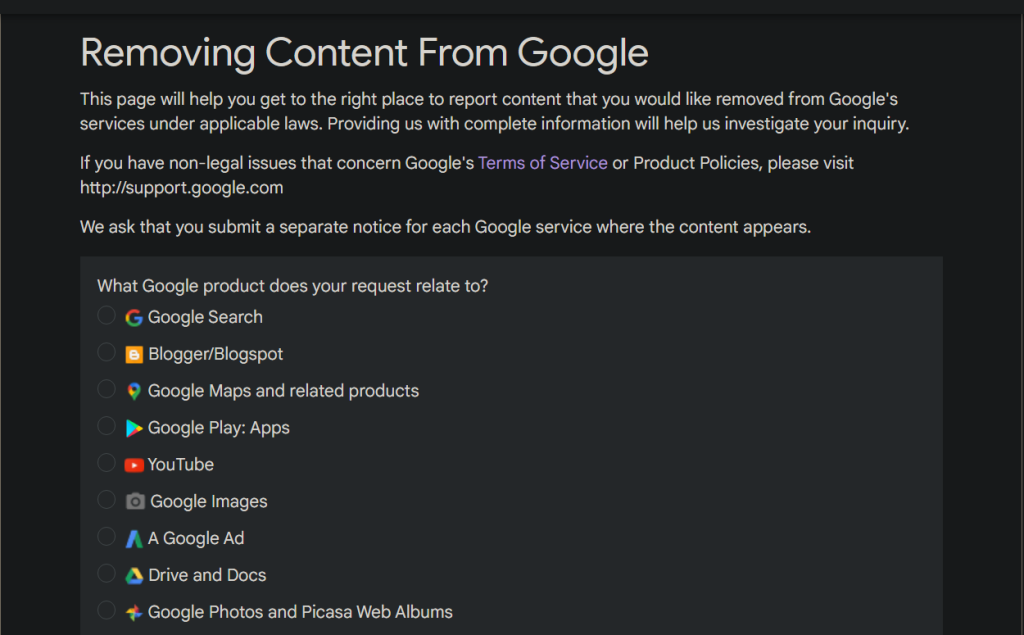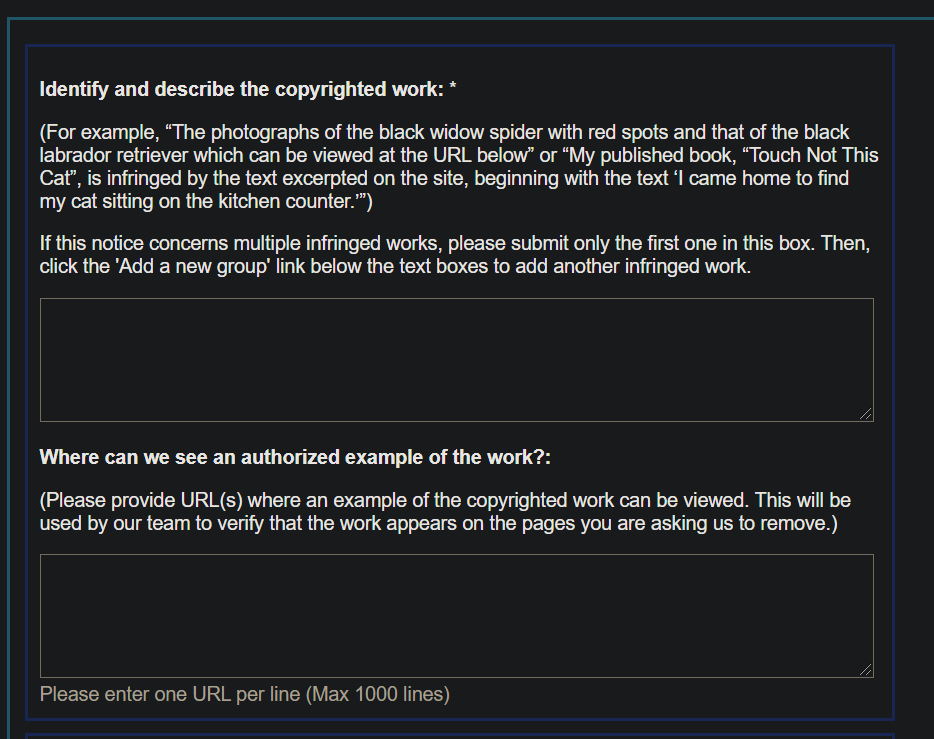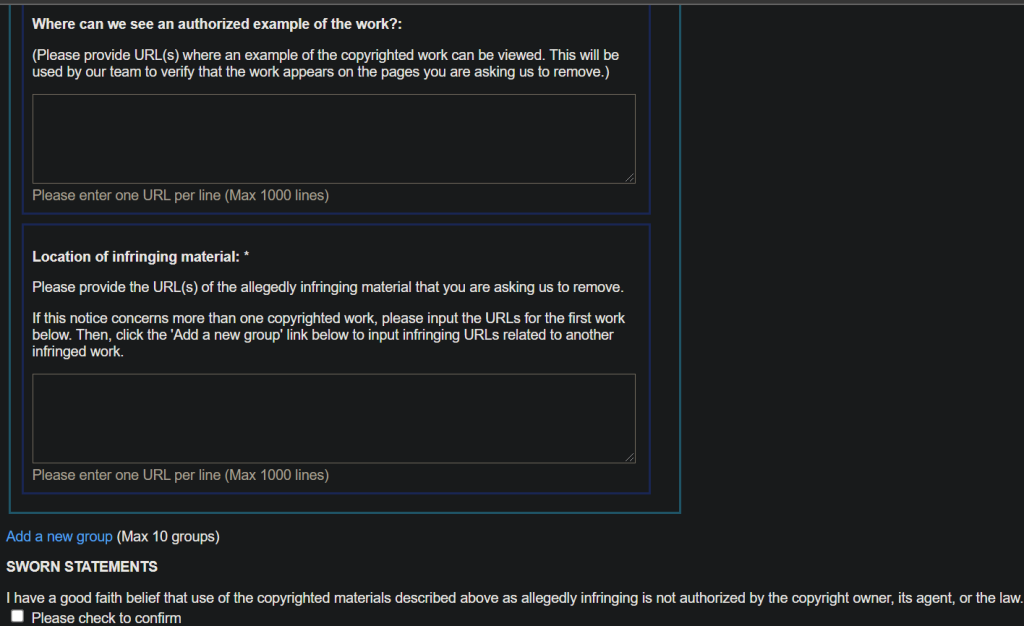Google’s copyright policy is compliant with notices of copyright infringement in accordance with the DMCA act. Consequently, if you notice someone infringing your work on search, blogger, Google maps, PlayStore, or other Google services, you may file a DMCA takedown request as instructed below.
Quick take: How to file a DMCA takedown notice on Google
- You may report the infringing activity to Google Support.
- If Google removes infringing content from search results, the media may still be available on other search engines and on social media.
- You may send DMCA takedown request to Google or directly to the infringing website.
- Filing a fraudulent takedown request may result in civil action.
- You must create a Google account to file a DMCA takedown request.
Because Google is a conglomerate, the takedown process is the same for most companies under its umbrella, this includes: Google Search, Blogger/Blogspot, Google Maps, Google Play, Youtube, Google Images, Google Ads, Google Drive, Google Photos, Stadia, Poly, Firebase, Feedburner, Data Studio, Google Classroom, Google+, and more.
How do I report a site on Google to DMCA?
Before you submit a DMCA takedown request to Google, it is vital to ensure that (1) you own rights to the work and can prove it. (2) the infringing content is not compliant with fair use exceptions. (3) you have evidence to back your takedown request.
When you notice your content on someone else’s site, you have three options:
- Contact the website’s service provider, in this case, Google and notify them of the violation.
- Contact the infringing party directly and ask them to take down the content or send a demand letter.
- If you have the resources, employ the services of a claims attorney, and file a civil lawsuit in federal court.
What constitutes copyright infringement?
Copyright infringement is the use of copyrighted material without the copyright owner’s consent.
For example, you are guilty of copyright infringement if you upload a movie or song to your website without the owner’s permission or share it on file-sharing websites.
The person who owns rights to the property may take civil action against you to recover damages. However, lawsuits are time-consuming and expensive. Because of that, the DMCA takedown process is a free alternative that you may use to force the infringing party to stop using your content. You also have the option to send a demand letter.
A demand letter informs the person infringing your content that you are aware of the activity and have enough evidence to take civil action. But instead of a civil action, you are willing to negotiate a settlement out of court. That raises the question:
How do I file a DMCA takedown request on Google?
Step 1: go to g.co/legal or begin the DMCA Takedown process by completing this form.

Step 2:Identify and describe the infringing work

Step 3: Submit your notice and check your email

Remember, according to Google, quote:
“Misrepresentations made in your notice regarding whether material or activity is infringing may expose you to liability for damages (including costs and attorneys’ fees). Courts have found that you must consider copyright defenses, limitations, or exceptions before sending a notice. In one case involving online content, a company paid more than $100,000 in costs and attorney’s fees after targeting content protected by the U.S. fair use doctrine. Accordingly, if you are not sure whether material available online infringes your copyright, we suggest that you first contact an attorney.”
How to write DMCA takedown notice on Google
If the infringing content is on search, select search and proceed to the next step. To ensure that the request is successful, you must ensure that your takedown notice is compliant with section 512c of the DMCA act. That means your takedown request should contain the five elements listed below:
- Your contact information: upon receiving a takedown notice, Google will contact you via email. That means that you must have a Google account.
- The request must contain your physical or digital signature.
- You must identify the copyrighted work, infringed material, infringing activity, and specific location of the infringing activity. In other words, do not send the entire website to Google, only send screenshots, links, or other direct evidence.
- The request must also contain a statement that you have a good faith belief that the use of the material was not authorized by you.
- It should also contain a statement that the information you provided is accurate.
Note that the party receiving the takedown notice has the right to take civil action if you send a fraudulent takedown notice. They also have the right to file a DMCA counter-notice (link).
Can you sue a website on Google for copyright infringement?
Yes. According to Google, even if the takedown request is successful, that is Google removes the webpage from search results. However, the content may still be available on other search engines, social media sites, and the website itself. Because of that, you may have to contact the site owner directly and ask them to take down the content.
If contacting the site owner directly does not work, you may proceed with legal action.
What to remember
- A cease-and-desist letter serves the same function as a DMCA takedown notice. You may send it to the offender, Google, or other service providers.
- You have 14 days to send a buffer notice, or the service provider may reenable the disabled page or site.
- You have the option to file a counter-notice if you receive a DMCA takedown notice.
- Content related to satire, commentary, parody, and news reports -are protected by fair use exceptions.
- Google will only send a takedown notice if they have cause to suspect the validity of your complaint. So, make sure that you have evidence to back your claim
- you must submit a separate notice for each Google service where the infringing content appears. For example, if it is on the website and YouTube, you will have to submit a takedown notice for each violation.
What if it is a user-generated site?
DMCA protects owners of user-generated content sites from lawsuits that may stem from content uploaded by users but only up to a certain extent. That means taking legal action against user-generated content sites such as Facebook can get convoluted. We recommend consulting with a claims attorney if you find your work on a user-generated site. You may also contact the infringing party directly.
Should I sue or file DMCA notice?
As mentioned, lawsuits are expensive, and you may be opening yourself up for civil action if you file a fraudulent request. Because of that, you should first consider sending a request and if the infringing party does not comply, consult with a claims attorney to figure out the best way forward.
If you send a DMCA takedown notice to Google, make sure that you provide evidence and that you have copyrighted the content and can prove it.
Other DMCA Takedown Processes
If you need more advanced DMCA protection you can actively scan the internet for DMCA trademark infringements with DMCA Pro.